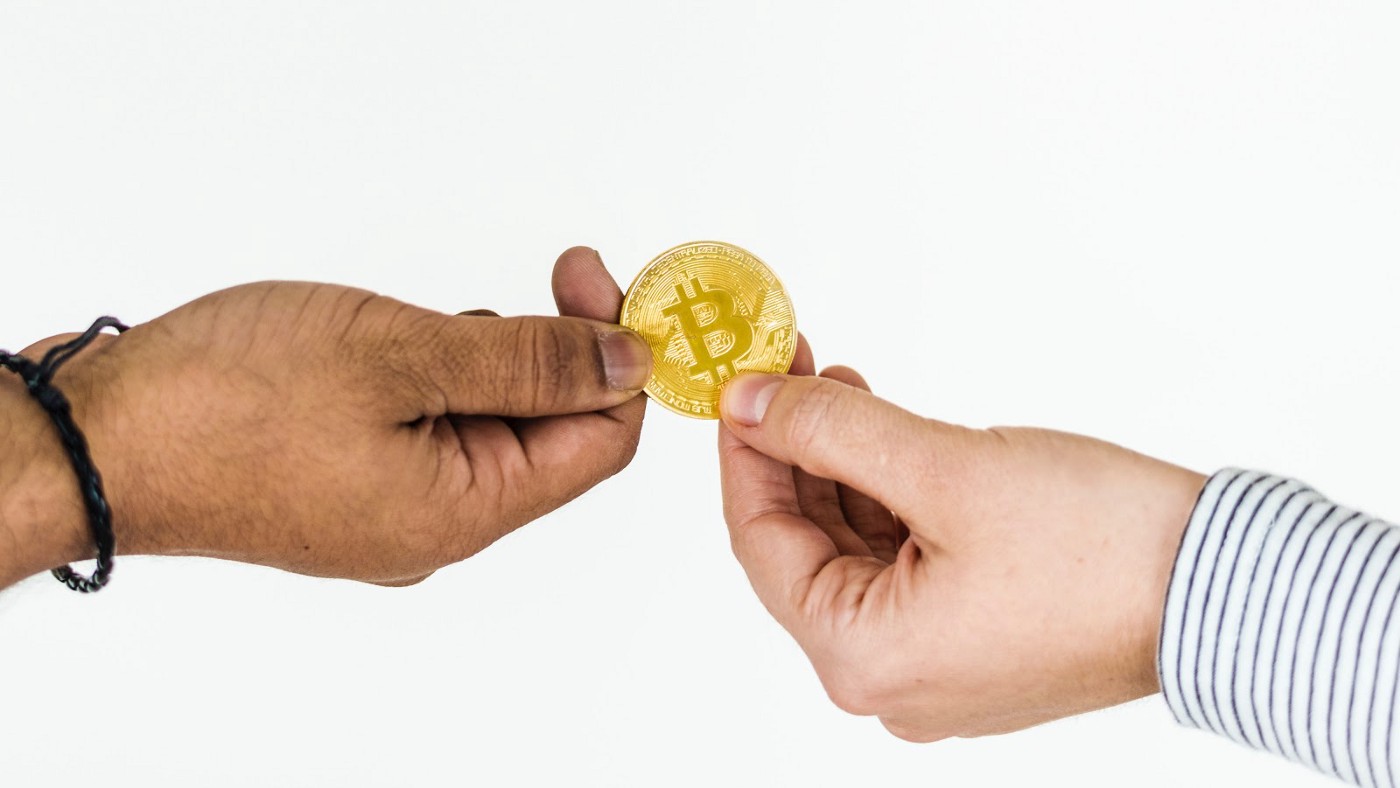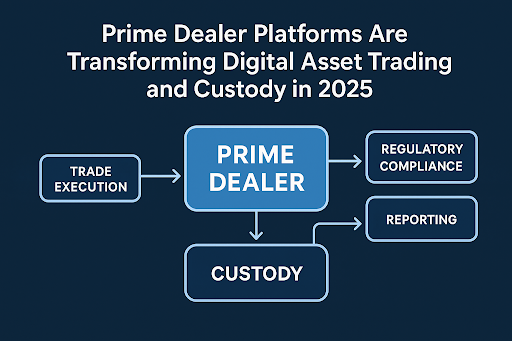Almost seven years ago, former Google engineer Charles Lee created a near clone of Bitcoin: a new cryptocurrency that shared almost all its code with that better-known market leader.
Despite being like Bitcoin in almost every way, Litecoin has gone on to carve out its own community, value proposition — and almost 2% of the entire crypto market by market capitalization.
How did Litecoin distinguish itself from Bitcoin despite being almost structurally identical to it, and how are the two measuring up to each other in 2018?
As with most questions in crypto, it’s best to look for answers in the data.
Here’s how Litecoin compared to Bitcoin by the numbers on July 13, 2012, nine months after its public release:
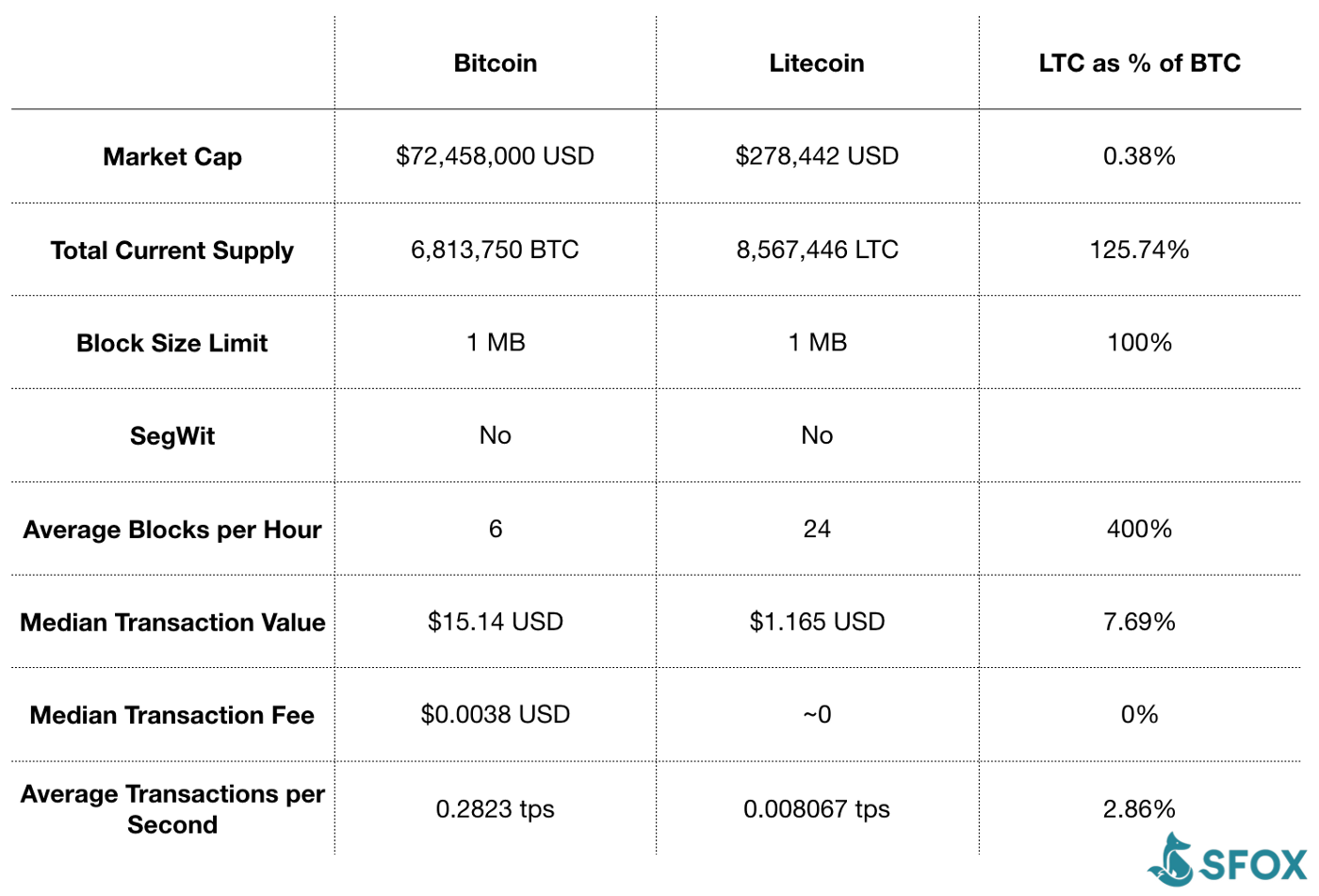
And this is how those numbers have changed as of September 12, 2018:
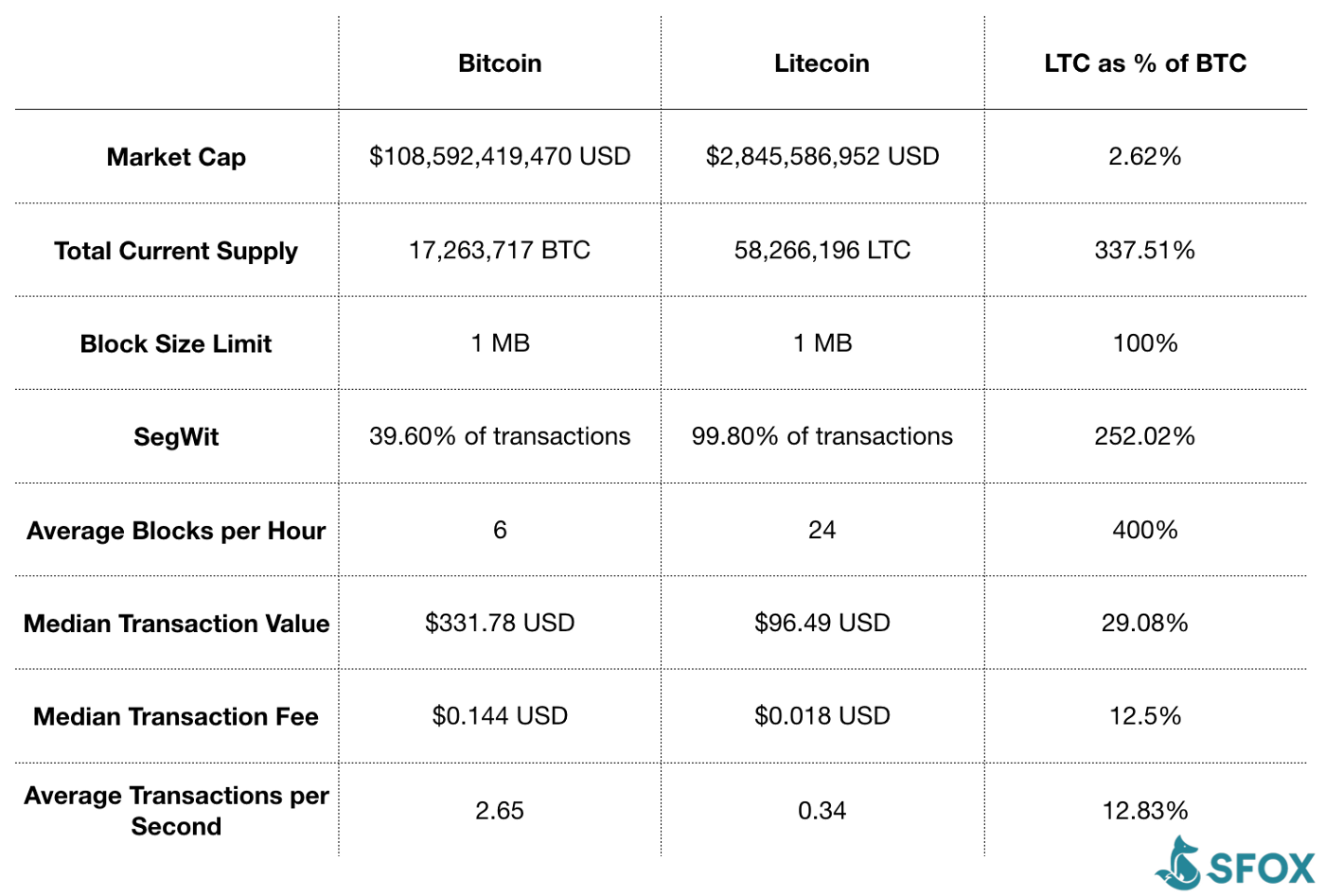
To understand how these numbers have shaped Litecoin vs Bitcoin — and how they’ll continue to influence the relationship between these cryptocurrencies in the future — we need to interrogate three dimensions of their history:
- The origin story. How did the way in which Litecoin first launched set it up for mass adoption in an ecosystem dominated by Bitcoin?
- The infrastructure. How did the few differences between Litecoin and Bitcoin make the former better suited for day-to-day commerce than the latter?
- The community. What kind of future for these cryptocurrencies can we expect, given the difference in the level of activity and support in their respective communities?
Digging into these dimensions shows us that Litecoin had a clear, compelling advantage when it first launched — but it’s unclear whether that advantage will last in the long run.
Litecoin gave people another shot at capturing the value of Bitcoin
Travel back with us to the state of crypto in 2011, when Charles Lee first considered the idea of Litecoin. Here’s some context around what was happening then:
- A gentleman named Laszlo had proven Bitcoin’s commercial potential by spending 10,000 BTC to purchase two large pizzas in May 2010.
- Bitcoin’s price had shot from just under $0.05 USD in July 2010 to a peak of almost $30 USD in June 2011 — a ~60,000% price increase in less than a year.
- Bitcoin mining was getting beyond the reach of ordinary hobbyists, with application-specific integrated circuits (ASICs) being built for the express purpose of mining increasingly computationally intensive blocks.
It was clear to anyone who was paying attention that Bitcoin had the potential as a new medium of value transfer — but it also looked to many as if they had already missed out on the opportunity to be an early adopter of Bitcoin and capture its value. (Little did they know how much higher the price of Bitcoin was going to climb!)

It was in this landscape that Charles Lee launched Litecoin. The new cryptocurrency had a simple and compelling value proposition: it’s almost exactly like Bitcoin, but better for daily commerce — and you can buy it from almost the very moment it’s first created.
Rather than following in Satoshi’s footsteps and anonymously releasing Bitcoin after mining at least a million on his own, Lee was upfront about his identity and publicly released Litecoin after mining only 150 coins.
In this regard, the fact that Litecoin was almost the same as Bitcoin wasn’t a bad thing. Bitcoin had already proven that it had utility: if someone could create a blockchain that took the same fundamentals of Bitcoin but optimized even a little bit further for that specific utility, people would have a second chance to “get in on the ground floor” of a successful cryptocurrency.
That’s exactly what Lee aimed to do with Litecoin, and in the short run, it was a success: trading for about $0.03 USD in July 2012, Litecoin reached a price point of $40 USD in November 2013 — an increase of over 130,000%.
Litecoin was built to be better for ordinary transactions
There are really just three main structural “tweaks” that makes Litecoin different from Bitcoin, each of which was meant to make Litecoin more accessible for everyday commercial use:
- A different hashing algorithm.
- More overall coins.
- More frequently mined blocks.
Let’s consider the initial and ongoing impact of each one, in turn.
1. Democratizing mining
In the early days of Bitcoin, anyone could use their computer to mine new blocks — but the rise of ASICs and organizations that pooled their computational power together to mine BTC put this process outside of ordinary people’s reach.
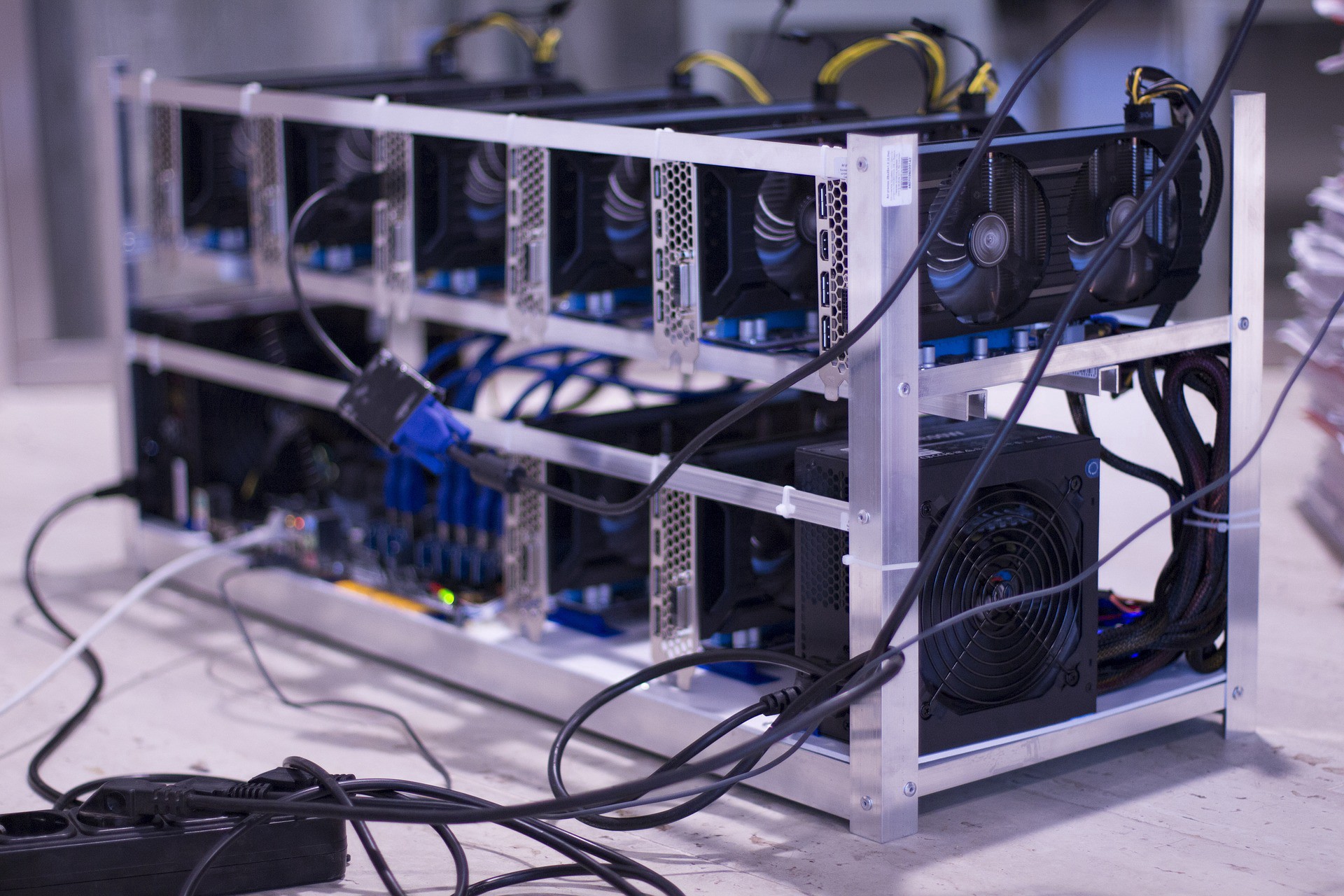
Lee wanted Litecoin to be minable by anyone, so he implemented a different hashing algorithm of his own design to make LTC mining ASIC-resistant. Rather than Bitcoin’s CPU-intensive SHA-256 algorithm, Litecoin uses the memory-intensive Scrypt algorithm. This difference made it much harder to design specialized computers for mining Litecoin — at least, that’s how it was when Litecoin first launched.
Nowadays, seven years later, it’s a different story: Litecoin-mining ASICs do exist, and they dominate the mining scene. To get a sense of exactly how much they dominate, take a look at the current hashrate distribution for the Bitcoin network as a point of reference:
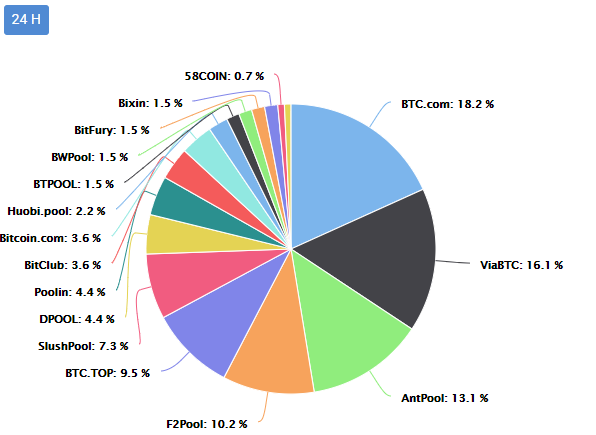
Now, compar that with the current hashrate distribution of the Litecoin network:
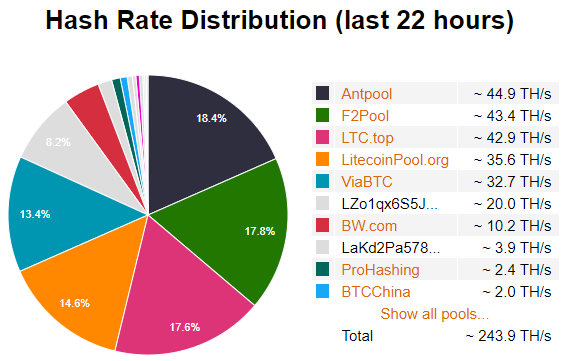
You’ll notice that the current hashrate distribution of Litecoin isn’t quite as “democratic” as you might have expected back in 2012. In fact, Litecoin’s mining pools are even more centralized than Bitcoin’s: Litecoin’s 6 largest pools control 90% of its hashing power, whereas Bitcoin’s 6 largest pools control only 74.4% of its hashing power.
It might seem weird that people still point to the hashing algorithm difference in Litecoin vs Bitcoin in 2018, when that difference no longer prevents mining pools from winning most Litecoin blocks. But remember the context surrounding Litecoin’s initial release: Bitcoin was wildly successful and becoming harder to mine, while Litecoin offered an apparently level playing field to miners and allowed the public to start mining before Lee amassed very many coins at all. It’s quite likely that this incentivized people to actually mine Litecoin, spurring the early adoption that’s so important to a cryptocurrency’s survival.
2. Lowering the perceived price point
Litecoin is eventually going to have four times as many total coins as Bitcoin: 84,00,000 LTC will ultimately be circulated, in contrast to Bitcoin’s 21,000,000 coins. This is part of what Lee had in mind when he said that he wanted Litecoin to be “silver to Bitcoin’s gold”: Litecoin’s finite supply will make it inflation-resistant like Bitcoin, but its larger supply will ensure that it’s always relatively cheaper than Bitcoin.

Similar to what we saw with mining above, this data can be a little misleading. Cryptocurrencies are something that you can buy fractionally, so you can invest $50 in Litecoin just as easily as you can invest $50 in Bitcoin. But price still can make a difference — just not in the way you expect.
For instance, there’s a psychological element to the price of cryptocurrencies. When SFOX added support for Litecoin trading, we added it to the list of BTC, ETH, and BCH — each of which has a higher price-per-coin associated with it than LTC. To the crypto newcomer, that lower price tag can make LTC seem more affordable, especially when there’s an order-of-magnitude difference between LTC and the next “cheapest” coin (1 LTC is currently trading under $50 USD, whereas 1 ETH is hovering at just south of $200 USD). Notice, though, that if this psychological effect has a real impact on price, then it’ll stop impacting LTC as soon as a lower-priced coin is added.
The lower price point also makes it easier to suppose that Litecoin is undervalued. Some investors might see the vast difference between Bitcoin and Litecoin’s prices as an opportunity to get in before Litecoin appreciates: conceivably, Litecoin could be worth 25% of Bitcoin, but its market cap is currently just 2.62% of Bitcoin’s.
While these might not be the soundest investment theses, they’re powerful drivers when it comes to speculation — and as much as we want to focus exclusively on the many signs of crypto’s maturation as an industry, we should recognize that much of the market is still based on psychology and speculation.
3. Accelerating confirmation times
What’s probably making the biggest difference in Litecoin vs. Bitcoin today is the fact that Litecoin adds new blocks roughly four times as frequently as Bitcoin does: roughly every 2.5 minutes, rather than every 10 minutes.
Why does that matter?

Imagine you’re at a marketplace and you want to buy something. That transaction needs to be fast: you can’t be standing at a register for a long time waiting for your transaction to be confirmed. Cash can be handed over instantly — and even a 15-second delay while a credit-card reader says “PROCESSING” can seem intolerable in the moment. In contrast, Bitcoin transactions can take anywhere from 30 minutes to an hour to be confirmed a sufficient number of times.
Litecoin’s choice to have a new block every 2.5 minutes rather than every 10 minutes means that transactions can be confirmed faster, which is essential for these sorts of ordinary commercial transactions. This is further buttressed by the fact that virtually all of Litecoin’s transactions use SegWit (“segregated witness”), a method of data segregation that further increases transaction speed by allowing more transactions to fit into any given block. Only about 40% of Bitcoin transactions currently use SegWit.
All the same, it’s important to keep things in perspective: 2.5 minutes for a transaction confirmation is still much slower than having confirmation at point of sale. That’s one area where physical currency and credit cards still have both Bitcoin and Litecoin beat.
In an industry driven by community, Litecoin’s isn’t very vocal
Litecoin had the structure and the initial momentum to become a leading means of blockchain-based value transfer, and it does facilitate tens of thousands of transactions per day — even though it’s still about an order of magnitude behind Bitcoin in terms of transaction volume. But there’s a bigger problem lurking for Litecoin that data on blockchain performance doesn’t capture: its community doesn’t appear to be that engaged.
Here are some different stats that do a better job of capturing this:
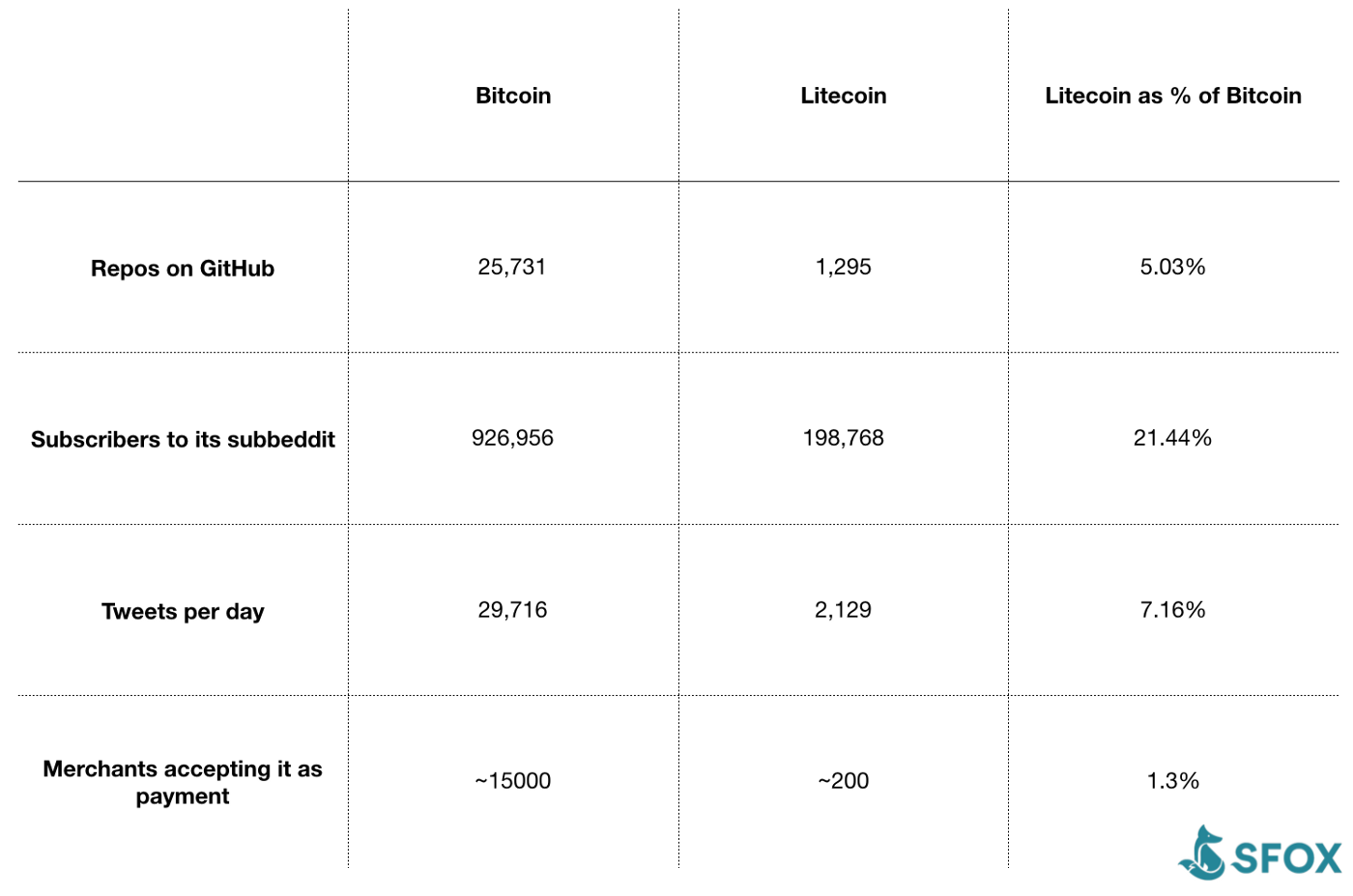
The estimates of how many merchants accept Bitcoin vary, but they range from roughly 13,000 to 100,000 depending on whom you ask. Either end of that range varies by multiple orders of magnitude from the ~200 merchants the Litecoin foundation has identified as accepting Litecoin.
That fact isn’t an inherent concern: if a payment method is young but actively being evangelized and further developed, its future might promise a much more widespread adoption. The problem is that this doesn’t seem to be the case for Litecoin: even as more exchanges and wallet providers add support for it, its developer and user communities seem relatively quiet. Given that Litecoin’s sole focus is on becoming a widely accepted and efficient method of value transfer, it’s worrisome that there doesn’t seem to be a significant amount of effort going into making that happen.
Looking ahead: Pedal to the metal
Litecoin rose to a position of early success by seeing the success of Bitcoin, optimizing itself slightly more for daily commerce, and giving individuals a chance to invest from Day 1. But that kind of early success can’t sustain anything forever, whether in the crypto industry or elsewhere.
For Litecoin to continue to push ahead, its community needs to stay vocal and diligent. From the Litecoin Foundation to individual developers, Litecoin has the network it needs to continue expanding and succeeding — they need only to activate it.
The above references an opinion and is for informational purposes only. It is not intended as and does not constitute investment advice, and is not an offer to buy or sell or a solicitation of an offer to buy or sell any cryptocurrency, security, product, service or investment. Seek a duly licensed professional for investment advice. The information provided here or in any communication containing a link to this site is not intended for distribution to, or use by, any person or entity in any jurisdiction or country where such distribution or use would be contrary to law or regulation or which would subject SFOX, Inc. or its affiliates to any registration requirement within such jurisdiction or country. Neither the information, nor any opinion contained in this site constitutes a solicitation or offer by SFOX, Inc. or its affiliates to buy or sell any cryptocurrencies, securities, futures, options or other financial instruments or provide any investment advice or service.
